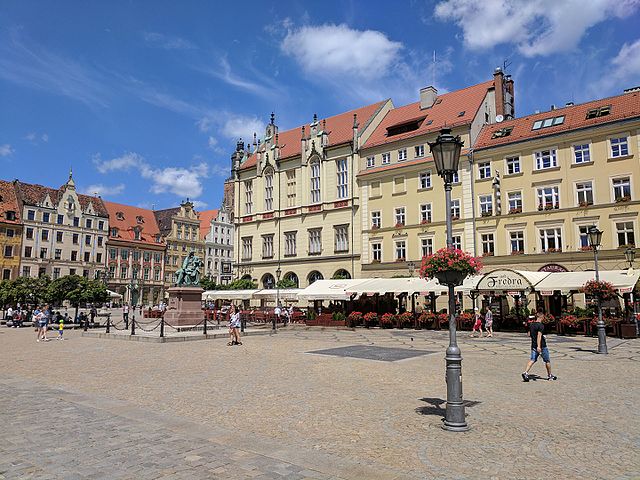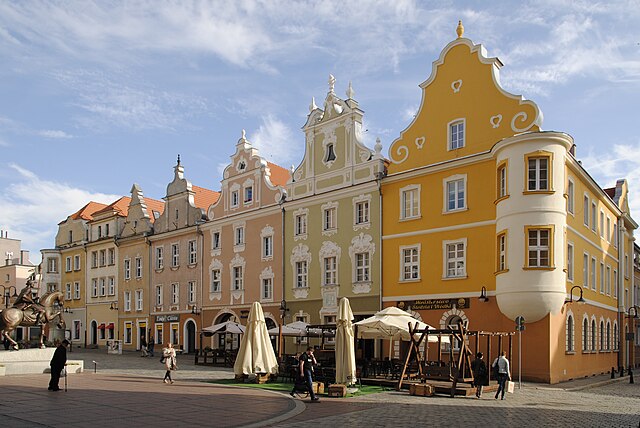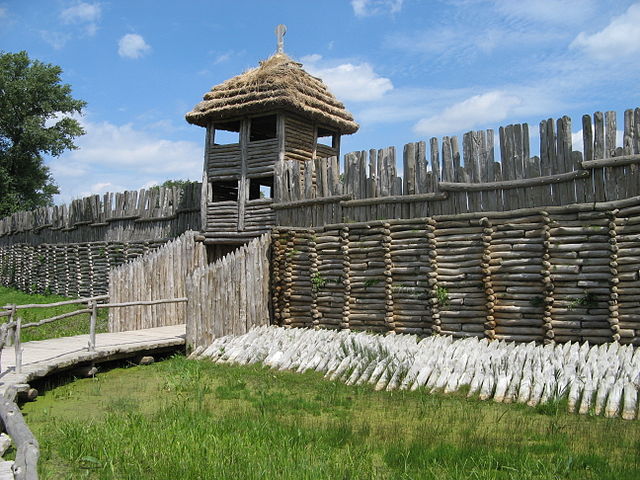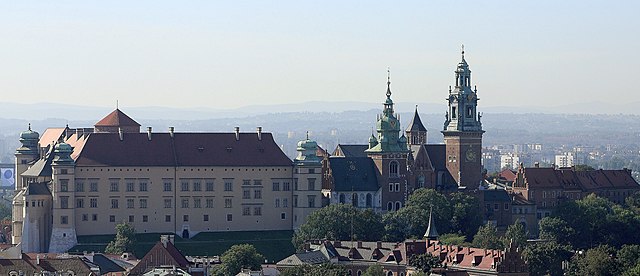Silesia is a historical region of Central Europe that lies mostly within Poland, with small parts in the Czech Republic and Germany. Its area is approximately 40,000 km2 (15,400 sq mi), and the population is estimated at 8,000,000. Silesia is split into two main subregions, Lower Silesia in the west and Upper Silesia in the east. Silesia has a diverse culture, including architecture, costumes, cuisine, traditions, and the Silesian language. The largest city of the region is Wrocław.
Image: Ksiaz w jesiennej scenerii
Image: Wrocław square
Image: Market Square Opole Southside 2019
Image: Spodek.4
Poland, officially the Republic of Poland, is a country in Central Europe. It extends from the Baltic Sea in the north to the Sudetes and Carpathian Mountains in the south, while its longest river is the Vistula. Poland has a temperate transitional climate and is the fifth-most populous member state of the European Union, with its sixteen voivodeships having a total population of over 38 million and covering a combined area of 312,696 km2 (120,733 sq mi). It is bordered by Lithuania and Russia to the northeast, Belarus and Ukraine to the east, Slovakia and the Czech Republic to the south, and Germany to the west. The nation's capital and largest metropolis is Warsaw. Other major cities include Kraków, Wrocław, Łódź, Poznań, and Gdańsk.
A reconstruction of a Bronze Age, Lusatian culture settlement in Biskupin, 8th century BC
The Battle of Grunwald was fought against the German Order of Teutonic Knights, and resulted in a decisive victory for the Kingdom of Poland, 15 July 1410.
Wawel Castle in Kraków, seat of Polish kings from 1038 until the capital was moved to Warsaw in 1596
King John III Sobieski defeated the Ottoman Turks at the Battle of Vienna on 12 September 1683.








